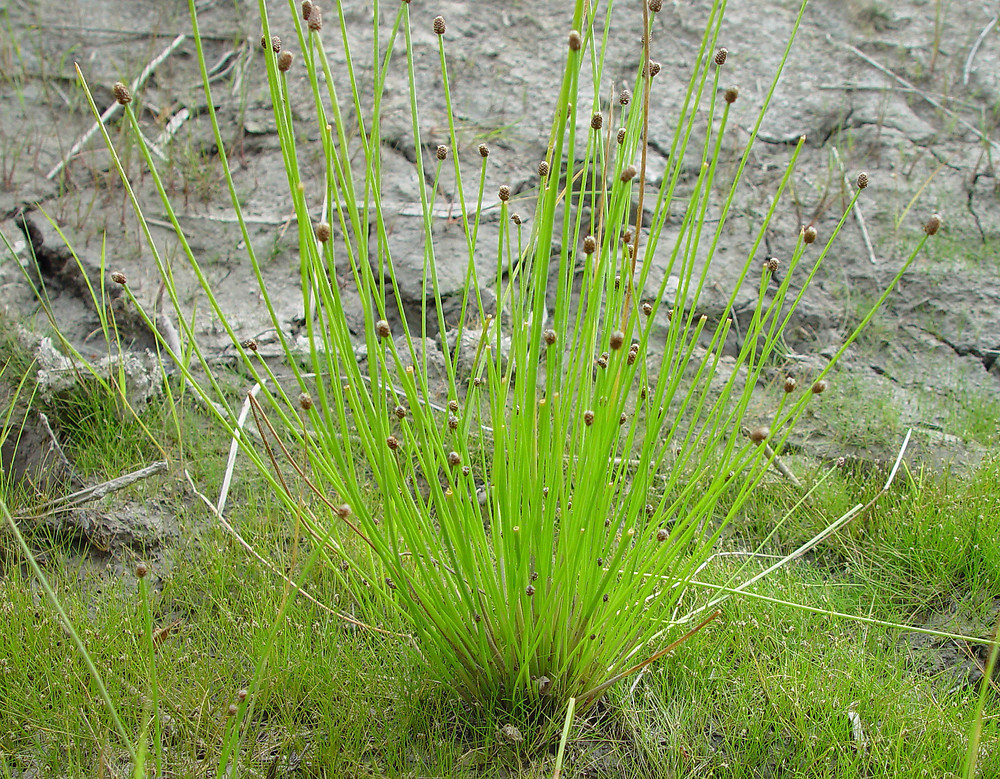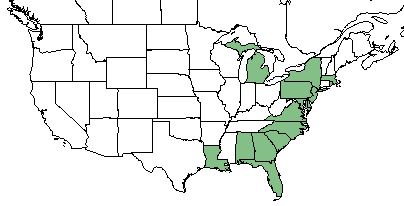Difference between revisions of "Eleocharis tricostata"
(→Ecology) |
|||
| Line 28: | Line 28: | ||
<!--===Phenology===--> <!--Timing off flowering, fruiting, seed dispersal, and environmental triggers. Cite PanFlora website if appropriate: http://www.gilnelson.com/PanFlora/ --> | <!--===Phenology===--> <!--Timing off flowering, fruiting, seed dispersal, and environmental triggers. Cite PanFlora website if appropriate: http://www.gilnelson.com/PanFlora/ --> | ||
| + | It flowers and fruits between July and September.<ref name="Weakley 2015"/> | ||
| + | |||
<!--===Seed dispersal===--> | <!--===Seed dispersal===--> | ||
<!--===Seed bank and germination===--> | <!--===Seed bank and germination===--> | ||
Revision as of 19:26, 5 December 2017
| Eleocharis tricostata | |
|---|---|

| |
| Photo by © Arthur Haines, New England Wild Flower Society | |
| Scientific classification | |
| Kingdom: | Plantae |
| Division: | Magnoliophyta - Flowering plants |
| Class: | Liliopsida - Moncots |
| Order: | Poales |
| Family: | Cyperaceae |
| Genus: | Eleocharis |
| Species: | E. tricostata |
| Binomial name | |
| Eleocharis tricostata Torr. | |

| |
| Natural range of Eleocharis tricostata from USDA NRCS Plants Database. | |
Common names: three-angle spikerush[1][2]
Contents
Taxonomic Notes
Description
Distribution
Ecology
Habitat
E. tricostata is an obligate wetland species[2] found in wet pine savannas and bogs.[1]
It flowers and fruits between July and September.[1]